Category: Technical
We expect many owners first experience of distributed CAN based electrical systems will be when they pick up their Garcia. In our last boat, a wire ran from the switch panel to the light/fan/etc and back. In the Garcia power goes to distribution ‘blocs’ to which the light/fan/etc is connected, and the power is turned on/off by a message over the CAN network. After about hull 24 the Scheiber CAN based power distribution was used not just for lights, but for almost all power distribution.
There is lots of discussion about whether this more complex system is ideal for an exploration style boat, but for us the important thing is been learning the skills to fix the system when it fails (its on a boat). We are no experts, but we thought we would collect together some stories and learnings that might help other owners.
Here are a few things that were not immediately obvious to us:
- Most of the lights and fans are on lighting blocs. Your light switches talk wirelessly to these lighting blocs and you can have fun reconfiguring them to switch on the things you expect them to switch on.
- The navigation lights are on a lighting bloc. If the bloc fails, your nav lights fail. You need to have a plan. Ours did fail when we were in port and we wrote about it here.
- Bloc 9s are used for most of the power distribution. These have some configuration options that can have unforeseen and expensive consequences. You can read about one such experience here.
- One of the options you can configure on a Bloc 9 is to automatically power on when the system restarts. This might be set for a Fridge/Freezer so that they come on after a power outage. Perhaps somewhat less obvious is when you leave the boat for a few weeks, turn off the fridge on the Navicolor, and leave it propped open. If there is a power out event whilst your are away, the fridge will restart and run flat out as it is open, and therefore using the same amount of power as a small town.
Here’s some things we would have told ourselves to do when we picked up the boat, based on our current 6 months of experience:
- Get the Scheiber English documentation. There is not much, but its worth having.
- Make sure you have the Schieber schematics from Garcia. These will tell you which bloc runs the ‘chart table light’ and where that bloc is physically located.
- To do any configuration on the Navicolor you will need a 4 digit code. Get this before you leave.
- Reconfigure a light switch. This will practice using the schematics to find a bloc. Also we like that the switches now make sense to us!
- Check the options on the Navicolor for the autopilot. Try to bypass the CAN switching using the fuse on the Bloc 9 for the autopilot. If the Navicolor fails you might need to do this.
- Write down a plan for navigation light failure and Navicolor display failure
After we returned from our canal boat trip we noticed some lights in the boat were not working.
In this brave new CAN bus world we need first to find the Scheiber lighting bloc:
- Look at the Scheiber schematics and work out which lighting bloc is responsible for the failed lights
- Look up the location of the the lighting bloc in Scheiber schematics boat layout page
The lighting bloc for the failed lights was behind the chart table and a quick inspection showed it was flashing red, but not green which indicate the bloc number in the network. When we looked at the Navicolor display the bloc was missing from the display.
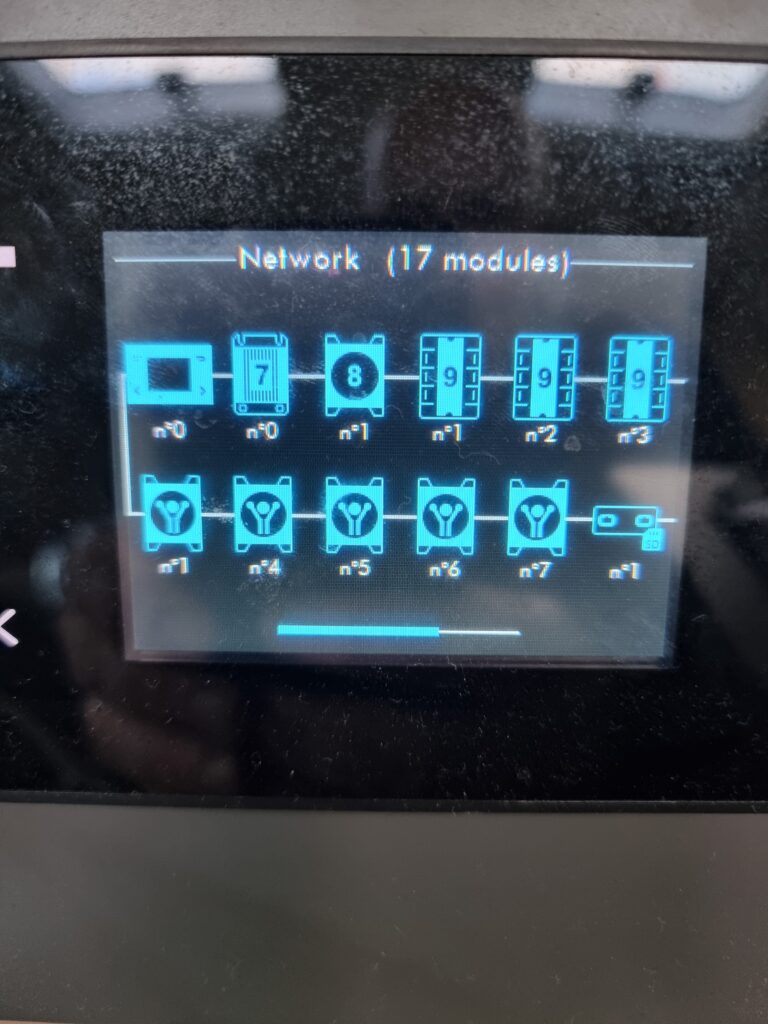
We noticed that a second bloc was missing from the Navicolor display. Reviewing the schematics we discovered the second failed bloc managed our navigation lights. The icons to turn on the navigation lights had also disappeared from the Navicolor display. This bloc was also flashing red with no green lights.
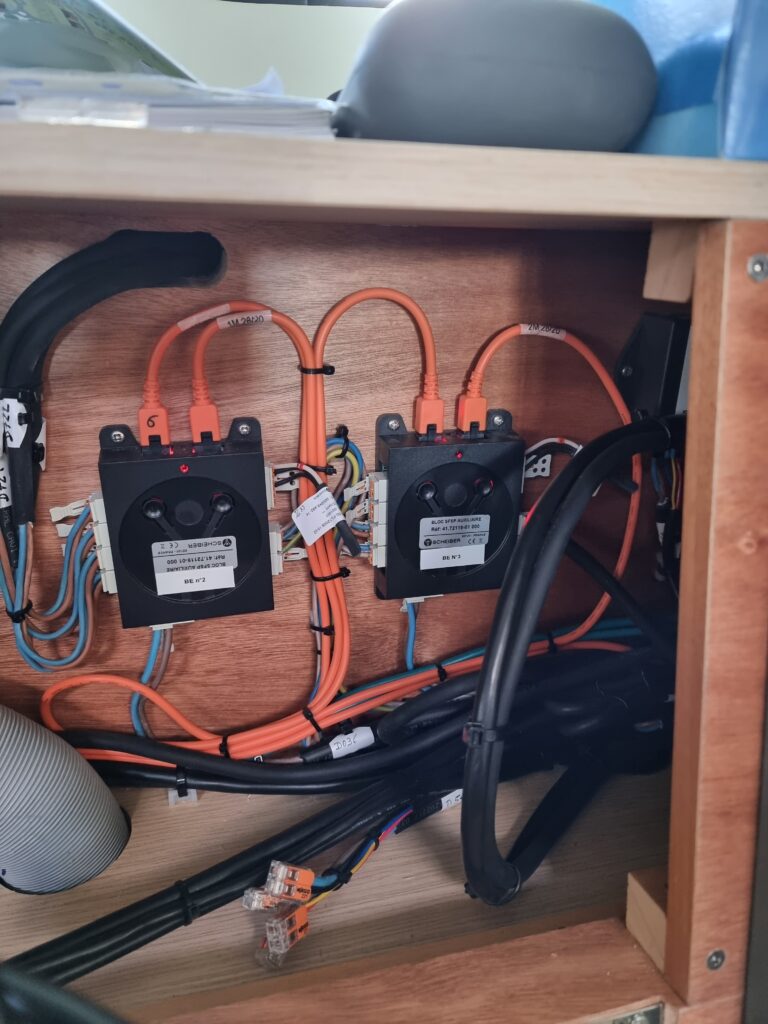
Garcia asked us to check the power and to bypass each failed Bloc in turn on the CAN bus. As the voltage was good and neither Bloc came alive when the other was bypassed, Garcia determined that the blocs had failed and needed to be replaced. Garcia noted that they had been using the blocs for 7 years and 98% never failed.
We got 2 new replacement blocs and transferred the wires from the old blocs to the new bloc. One of the wires tells the bloc what number it is in the network, but the configuration, and light switches need to be configured. We understand the configuration can be recovered from the last backup, but we chose to do it manually. The Scheiber schematics show the function of each slot and the relevant icon can be configured on the Navicolor screen.
Light switches can be assigned to functions on the lighing bloc by (surprisingly you can find English documentation on this on the Schieber web site):
- Long press (1.5sec) the left switch on the lighting bloc – this will make slot 1 turn on and off (ie if its a light it will flash)
- If you want to assign a new switch:
- Press the light switch that will turn on that light/fan/other
- Then press the light switch that will turn off that light/fan/other
- Press the left switch on the lighting bloc again to move to the next light/fan/other on the bloc and repeat
Our observations from this experience are:
- As the Scheiber lighting blocs are used for our navigation lights, a failure is a safety issue.
- It would be possible to substitute another bloc to get the navigation lights going again – this is likely the quickest option
- With some fiddling and some spare wire we could bypass the bloc and turn on the navigation lights (even if the Navicolor was dead)
- It took Garcia about 6 weeks to get us a replacement bloc
- Knowing how to reprogram the blocs and light switches is a necessary skill
We now carry a spare lighting bloc and could install it. In hindsight we think it would have been very useful to have reprogrammed a few light switches when we got the boat as this process uses most of the steps we need to replace a bloc.
When we are on autopilot, and the waves get over 1.5m and are not directly on the beam, the following happens:
1. An autopilot alarm goes off accompanied by a ‘No Rudder Response’ message
2. The dog rises from his slumber, barks and starts running madly around the boat trying to find the cause of the beeping
3. The autopilot switches off
4. Panicked people start diving around the cockpit trying to regain control boat control
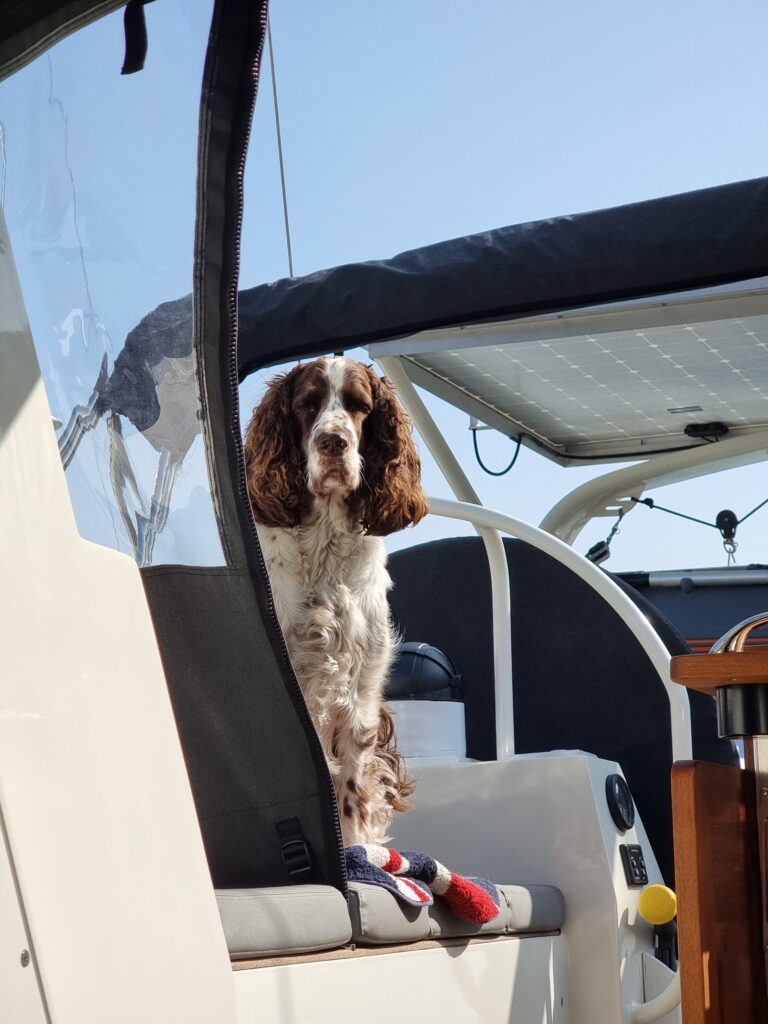
We have a single NAC-3 autopilot running a Jefa steering arm with an RF25 rudder sensor. The problem, however, turned out to be none of these, but was a configuration issue on the Scheiber electrical system.
Our diagnosis of the autopilot issue took several months:
1. We did the dock based calibration of the autopilot. No change
2. Garcia ‘fixed’ the problem. Based on the boats track we suspect they ran the dock and sea calibration of the autopilot. No change.
3. Garcia contacted French Navico (B&G provider) who suggested changing some autopilot configuration parameters. No Change.
4. We contacted Navico UK (brilliant service & knowledgeable people). Over the phone analysis suggested a slipping clutch on the Jefa steering unit could be the culprit. Jefa confirmed it was not slipping.
5. We finally worked out that the voltage getting to the NAC-3 autopilot dropped as soon as it attempted to move the Jefa steering arm. The NAC-3 didn’t have enough power to move the Jefa arm, detected that the rudder hadn’t moved when instructed, and chose to give up and go home.
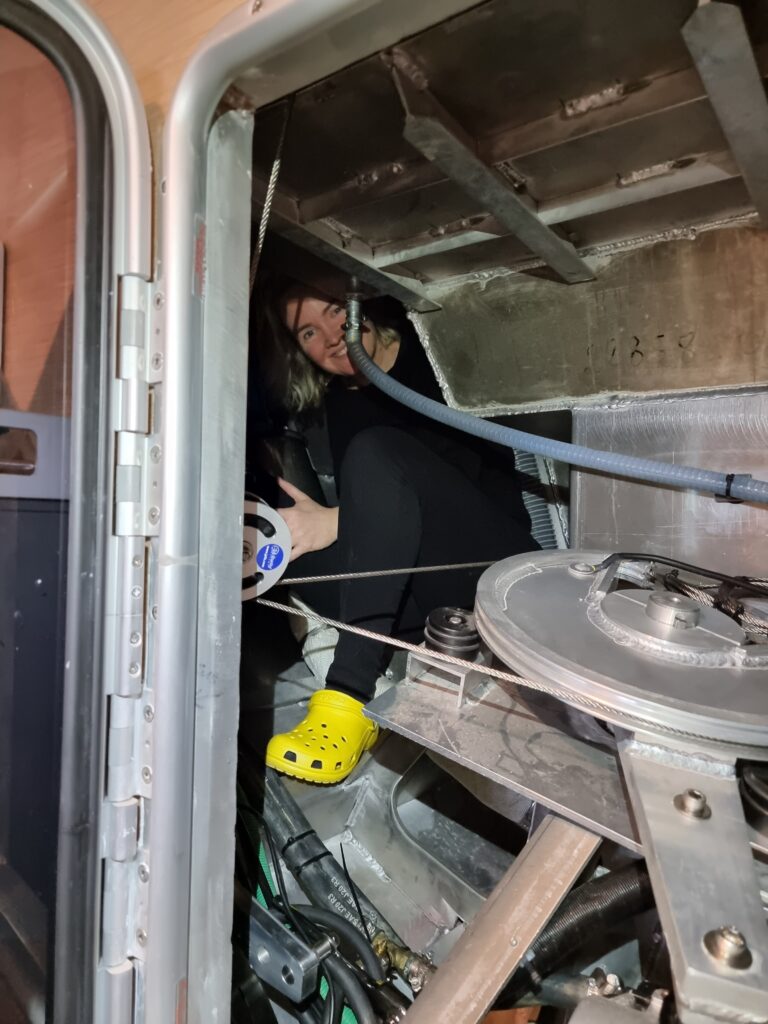
The power to the NAC-3 comes from a Scheiber Bloc 9. Its not hard to open these things and with a multimeter we could confirm there were lots of volts (14) coming in to the Bloc. We measured the output voltage which was an okish 12.5V. But when the autopilot was engaged and attempting to engage the Jefa arm we could see the voltage drop from 12.5V to 3-5V.
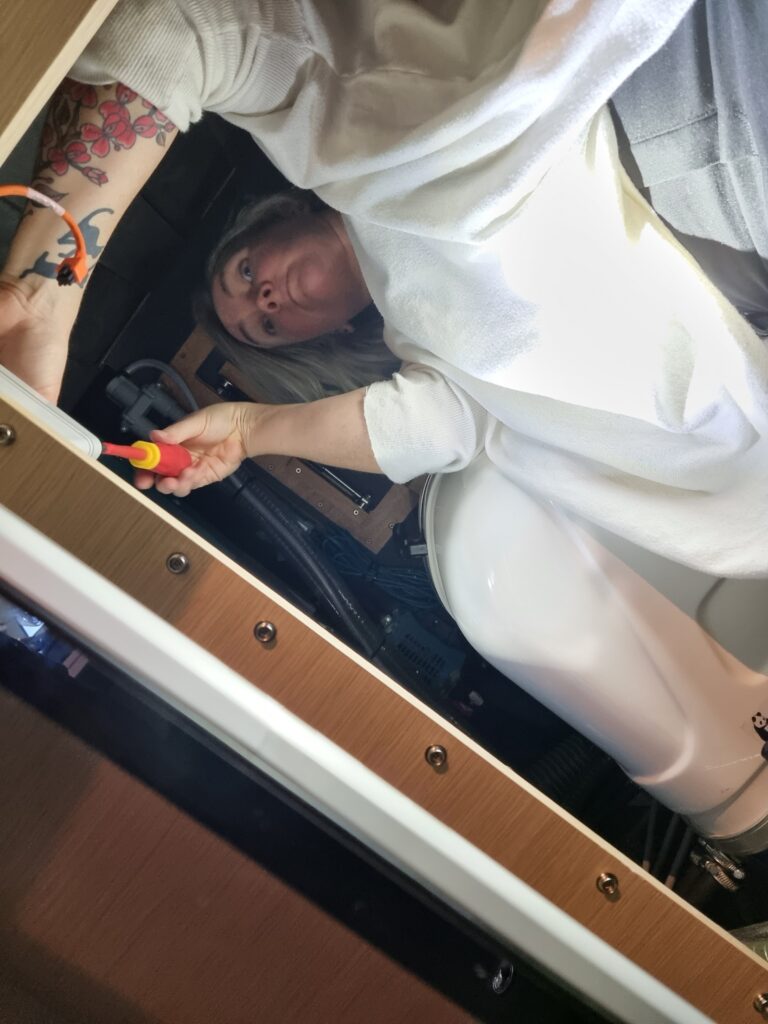
We moved the NAC-3 to another port on theBloc-9 and it worked fine with no voltage issues. It seemed like the output slot was fault.
We later discovered that the ‘faulty’ slot had the ‘Soft Start’ option turned on and this was causing the drop in voltage. This option can be selected on the Navicolor display. Once reconfigured, the original port worked with the autopilot.
We learnt that:
- Always check the Scheiber configuration if there is a hint of an electrical issue (or not)
- Its simple to open the Bloc 9 and test voltages with a multimeter
- Neurotic dogs do not like boat alarms

